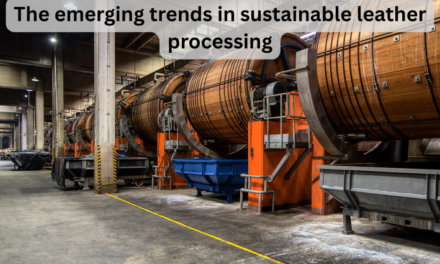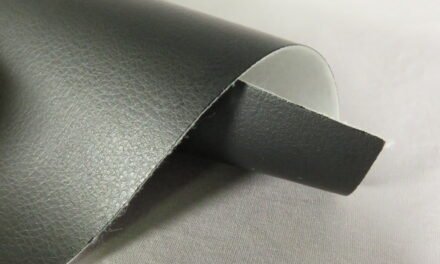Reducing the carbon footprint of leather manufacturing is a priority for the industry as it seeks to address environmental concerns while meeting modern sustainability goals. Key steps include adopting cleaner technologies, minimizing energy use, optimizing resources, and improving waste management practices. Here are the primary initiatives being implemented:
1. Adoption of Sustainable and Eco-Friendly Tanning Methods
Traditional tanning, especially chrome tanning, is resource-intensive and produces harmful chemicals. Sustainable tanning methods reduce carbon emissions and minimize environmental impact.
- Vegetable Tanning:
- Uses natural tannins from plant-based sources (e.g., bark, leaves, fruits) instead of chromium salts.
- Reduces chemical pollution and carbon emissions.
- Chrome-Free and Metal-Free Tanning:
- Alternative agents like glutaraldehyde and synthetic compounds replace heavy metals.
- Results in lower greenhouse gas emissions.
- Wet-White Tanning:
- An alternative process that reduces chemical usage and energy consumption during production.
- Enzymatic Tanning:
- Uses enzymes as a cleaner, low-energy substitute for traditional chemical processes.
Impact: Reduces harmful chemical discharge, water contamination, and carbon-intensive processes.
2. Renewable Energy Integration
Leather manufacturers are shifting to renewable energy sources to power their operations.
- Solar Energy:
- Installing solar panels on tannery rooftops to generate clean electricity.
- Biomass Energy:
- Utilizing organic waste (e.g., leather scraps, bark) to produce biomass energy.
- Wind and Hydropower:
- Transitioning to wind or hydropower to replace fossil fuel-based energy.
Impact: Decreases reliance on non-renewable energy sources, significantly reducing carbon emissions.
3. Water and Energy Efficiency
Improving process efficiency in leather manufacturing helps reduce both carbon emissions and resource use.
- Closed-Loop Water Systems:
- Recycling and reusing water in tanneries reduces water consumption and energy needed for treatment.
- Low-Water Tanning Methods:
- Innovative tanning techniques (e.g., dry tanning or waterless tanning) minimize water usage.
- Energy-Efficient Machinery:
- Use of modern, energy-efficient drum systems, dryers, and cutting equipment to reduce energy consumption.
Impact: Reduces carbon emissions associated with heating, water treatment, and machinery operation.
4. Waste Reduction and Upcycling
Minimizing waste and repurposing byproducts significantly lower the environmental burden of leather production.
- Utilizing Leather Byproducts:
- Scraps, shavings, and trimmings are recycled into bonded leather or other leather products.
- Tannery waste is also repurposed for fertilizers, gelatin, or biogas production.
- Waste-to-Energy Programs:
- Organic waste and sludge from tanneries are converted into renewable energy.
- Reducing Landfill Waste:
- Innovations in circular manufacturing prevent leather waste from ending up in landfills.
Impact: Cuts down on waste generation, reduces methane emissions from landfills, and improves resource efficiency.
5. Carbon Offsetting and Neutrality Programs
Leather manufacturers are committing to carbon neutrality through offset programs and emission reduction strategies.
- Carbon Offsetting:
- Investing in reforestation, renewable energy projects, and carbon credits to offset emissions.
- Lifecycle Analysis (LCA):
- Assessing the carbon footprint of the entire leather production process (sourcing, tanning, finishing) to identify and address emission hotspots.
Impact: Promotes accountability and helps the industry achieve net-zero emissions targets.
6. Traceable and Ethically Sourced Leather
Promoting traceability and sustainable sourcing reduces deforestation and other environmental impacts tied to raw hide procurement.
- Traceability Systems:
- Using blockchain technology and digital tracking to trace leather back to ethical, sustainable farms.
- Deforestation-Free Leather:
- Ensuring hides are sourced from regions where livestock farming does not contribute to deforestation (e.g., the Amazon rainforest).
Impact: Reduces the carbon footprint associated with cattle farming and hide transportation.
7. Adoption of Cleaner Chemicals and Dyes
The leather industry is transitioning to eco-friendly chemicals to reduce pollution and energy usage.
- Water-Based Finishes:
- Replacing solvent-based finishes with low-VOC (volatile organic compound) water-based alternatives.
- Natural and Low-Impact Dyes:
- Using plant-based dyes and reducing chemical processes during finishing.
Impact: Reduces air and water pollution, minimizing greenhouse gas emissions from chemical production.
8. Sustainable Leather Alternatives
While not directly reducing leather’s carbon footprint, innovations in bio-based alternatives offer lower-impact options for consumers.
- Mycelium Leather:
- Made from fungal mycelium grown in controlled environments.
- Requires fewer resources, emits less CO₂, and is biodegradable.
- Plant-Based Leathers:
- Derived from pineapple leaves, cactus, and apple skins, offering vegan and eco-friendly alternatives.
Impact: Diversifies sustainable options and reduces the need for resource-intensive traditional leather.
9. Certification and Standards Compliance
Leather manufacturers are adopting internationally recognized sustainability certifications to align with best practices.
- Leather Working Group (LWG) Certification:
- Promotes environmentally responsible practices across tanneries and supply chains.
- ISO 14001:
- Ensures effective environmental management systems are in place.
- Blue Angel Certification:
- Recognizes eco-friendly leather products.
- Cradle-to-Cradle Certification:
- Encourages circular manufacturing processes.
Impact: Ensures transparency, accountability, and adherence to sustainability standards.
10. Collaboration Across the Value Chain
Leather manufacturers collaborate with stakeholders to improve sustainability across the entire value chain.
- Partnering with farmers for sustainable livestock practices.
- Collaborating with researchers to develop greener tanning technologies.
- Partnering with fashion brands to promote eco-friendly leather products.
Impact: Creates a unified approach to reducing emissions and improving environmental responsibility.
Conclusion
The leather industry is actively adopting measures to reduce its carbon footprint by transitioning to sustainable tanning methods, renewable energy, efficient resource use, and waste reduction strategies. Collaboration across the value chain, traceability systems, and adherence to global certifications further support these efforts. Together, these steps align leather manufacturing with environmental goals, ensuring a more sustainable and responsible future.
Hashtags
#EcoLeather #SustainableFashion #EthicalLeather #EcoChic #EcoFriendlyLeather #EcoLeatherGoods #EcoLeatherAccessories #EcoLeatherBags #EcoLeatherShoes #EcoLeatherJackets #EcoLeatherBelts #EcoLeatherWallets #EcoLeatherFurniture #EcoLeatherDesign #EcoLeatherCraftsmanship #EcoLeatherQuality #EcoLeatherInnovation #EcoLeatherRevolution #EcoLeatherMovement #EcoLeatherCommunity







